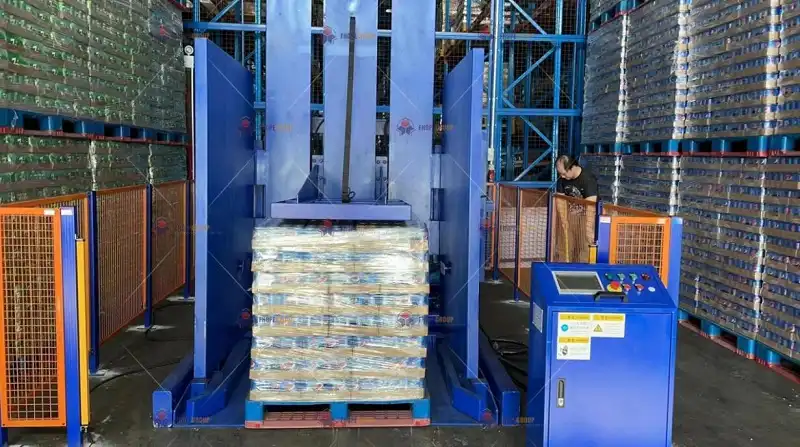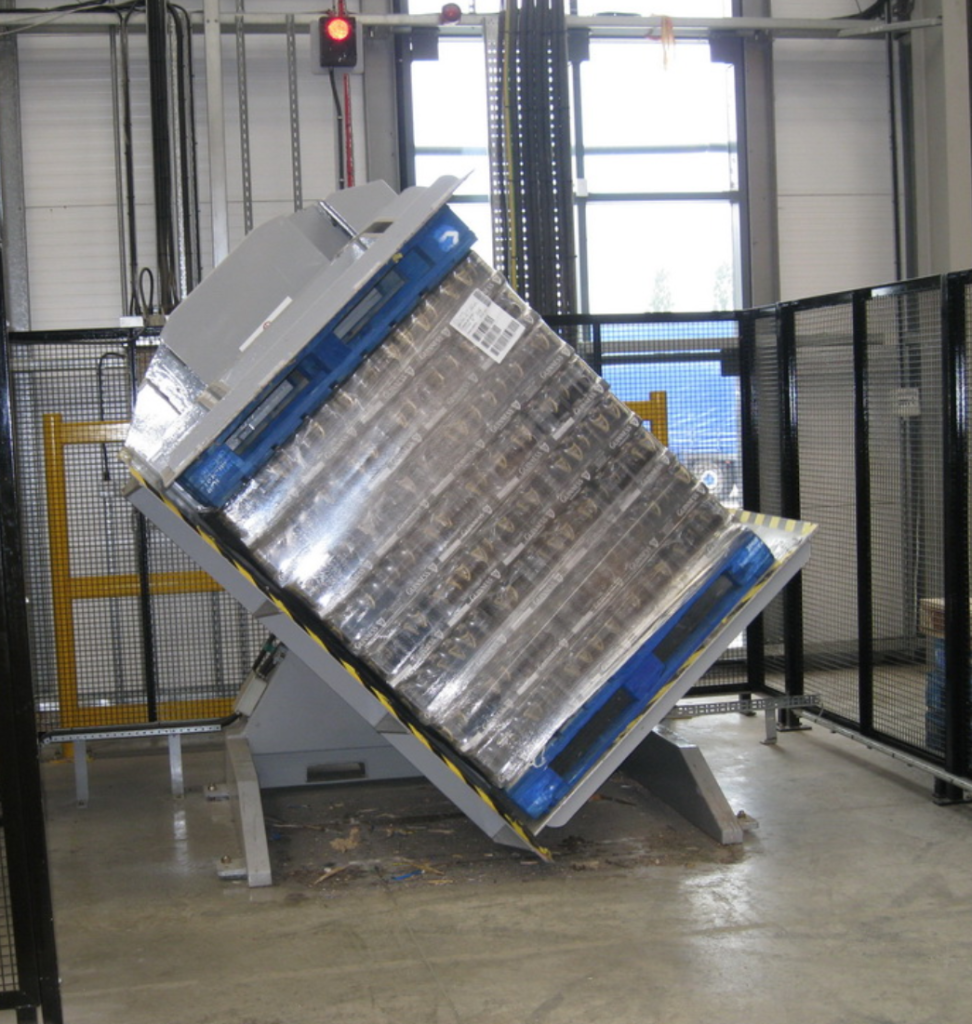The Importance of Load Stability in Pallet Changers: A Technical Breakdown

Introduction to Pallet Changers and Load Stability
In modern manufacturing, warehousing, and logistics environments, maintaining the stability of palletized loads is fundamental to safe, efficient, and damage-free operations. Among the specialized equipment designed for material handling, pallet changers play a crucial role. These machines facilitate the transfer of goods from one pallet to another (e.g., from wood to plastic, or from an in-house pallet to a shipping pallet) without requiring manual unloading and reloading. As automation increases across industries, the reliance on robust solutions like pallet changers that inherently safeguard load stability becomes paramount. This article provides a technical breakdown of why load stability is critical when using pallet changers and explores the mechanisms that ensure it.

What Defines Load Stability in Material Handling?
Load stability refers to the ability of a unitized or palletized load to maintain its structural integrity and balance during handling operations such as lifting, tilting, rotating, transporting, or storage. A stable load does not shift, lean, collapse, or lose components. Conversely, poor load stability poses significant risks, including:
- Product Damage: Goods can be crushed, broken, or contaminated.
- Safety Hazards: Unstable loads can fall, potentially injuring personnel or damaging equipment. Relevant safety standards, like those from OSHA, often emphasize secure loads.
- Operational Inefficiencies: Time is lost restacking or cleaning up spills, disrupting workflow.
Pallet changers, particularly models designed for tilting or inversion (like the FPFZ-CH01 which uses a 95-degree tilt), employ specific engineering features to secure the load throughout the pallet exchange process. The inherent stability of the load directly impacts the safety, speed, and success of the operation.
How Pallet Changers Engineer Load Stability
Modern pallet changers incorporate several key technical features designed specifically to maintain and enhance load stability during the transfer cycle. These often include:
1. Top Clamping Mechanisms
A pressing device, often hydraulically or electrically actuated, applies controlled pressure to the top of the load. This prevents vertical shifting and helps consolidate the load, especially important when dealing with stacked boxes or uneven surfaces.
2. Side Support and Clamping Systems
Lateral stability is maintained through side holding devices or walls. Pallet changers like the FPFZ-CH01 utilize side clamps to secure the load horizontally. This prevents items from bulging or falling sideways, which is critical when the load is tilted or inverted. Adjustable pressure settings allow handling of delicate or robust loads appropriately.
3. Smooth Motion Control
Hydraulic or electric drive systems are engineered for smooth, controlled movements. Gentle acceleration and deceleration during tilting, rotation, and lifting minimize inertia forces that could destabilize the load. Variable speed controls can further enhance this precision.
4. Robust Structural Design
The machine's frame, base, and moving components must be rigid and strong enough to handle the rated load capacity without flexing or vibration. A solid foundation, like the welded base and turnover frame mentioned for the FPFZ-CH01, ensures the entire system remains stable during operation.

5. Integrated Safety Features
Mechanical stops, limit switches, and sensors prevent over-travel or unexpected movements, contributing indirectly to load stability by ensuring predictable machine operation. Emergency stop functions are also critical safety elements.
Below is an example of a pallet changer in operation, demonstrating the controlled tilting motion:
The Critical Importance of Load Stability
Maintaining load stability during pallet changing operations is non-negotiable for several operational and business reasons:
1. Enhanced Workplace Safety
Unstable loads are a primary cause of material handling accidents. A load shift or collapse during a pallet change cycle can lead to severe injuries from falling objects or entanglement with machinery. Properly designed pallet changers with robust stability features significantly mitigate these risks, contributing to a safer work environment.
2. Protection of Valuable Goods
Product damage translates directly to financial loss. Industries handling high-value, fragile, or sensitive goods (e.g., pharmaceuticals, electronics, food and beverage, automotive components) rely on stable handling to prevent breakage, contamination, or cosmetic damage. Ensuring load integrity throughout the pallet exchange protects investments and maintains product quality.
3. Increased Operational Efficiency
Load instability causes disruptions. If a load shifts, operators may need to stop the process, manually adjust the items, or even fully restack the pallet. This consumes valuable time and labor, slowing down throughput and reducing overall warehouse or production line efficiency. Stable handling ensures a smooth, predictable, and faster workflow.
4. Significant Cost Reduction
The benefits above culminate in overall cost savings. Reduced product damage minimizes waste and return costs. Fewer workplace accidents lower insurance premiums and compensation claims. Higher operational efficiency increases productivity and optimizes labor utilization. Investing in pallet changing technology that prioritizes load stability yields a strong return on investment.
Key Technical Components Supporting Load Stability
Let's delve deeper into the technical elements within a pallet changer, using the FPFZ-CH01 as an illustrative example, that directly contribute to maintaining load integrity:
1. Precision Hydraulic Systems
The hydraulic motor and cylinders provide the force for lifting, clamping, and tilting. Critically, modern hydraulic systems offer precise flow and pressure control. This allows for smooth, jerk-free motion, essential for preventing sudden shifts in the load's center of gravity, especially during the tilting phase up to 95 degrees.
2. Reinforced Structure: Base and Frame
A heavy-duty, solid welded base provides a stable platform, minimizing machine movement during operation. The turnover frame, which directly supports the load, must be engineered for rigidity to handle dynamic forces without distortion. This structural integrity is crucial for loads up to the machine's capacity (e.g., 1000 kg).
3. Coordinated Clamping Action
The synergy between the top pressing device and side holding clamps is vital. They work in unison to create a secure "containment" around the load, effectively locking it in place relative to the machine frame during movement. Proper adjustment of clamping pressure based on load type is key.
4. Intuitive Control Systems
Whether through a panel control interface or a wireless remote, the control system must allow operators precise command over the machine's functions. Features like variable speed control, jog functions for fine adjustments, and clear status indicators enable operators to manage the process effectively and react appropriately to maintain stability.
Addressing Common Load Stability Challenges
Despite advanced machine design, operators may encounter challenges related to load stability:
- Irregular or Mixed Loads: Loads with uneven weight distribution, awkward shapes, or mixed product types are inherently less stable. Careful positioning and potentially customized clamping strategies are required.
- Fragile or Compressible Goods: Items susceptible to damage from clamping pressure require precise control. Pallet changers with adjustable pressure settings are advantageous here. Over-clamping can damage goods, while under-clamping risks instability.
- Poor Initial Palletization: If the load is poorly stacked or wrapped before reaching the pallet changer, the machine's ability to maintain stability is compromised. Proper upstream pallet building practices are essential.
- Environmental Factors: Uneven floors can cause the machine itself to be unstable. Vibrations from adjacent activities can also affect delicate loads. Operating on a level, stable surface is crucial.
Best Practices for Ensuring Load Stability with Pallet Changers
To maximize safety and efficiency when using pallet changers, adhere to these best practices:
1. Correct Pallet Selection and Load Placement
Ensure the pallet size is appropriate for the load dimensions and the machine's specifications. For example, the FPFZ-CH01 is suited for pallet dimensions typically between 1100-1200mm and load heights from 1500-2000mm. Center the load carefully on the pallet and within the machine.
2. Proper Machine Settings
Adjust clamping pressures (top and side) according to the load type – firm enough to secure, but not so tight as to cause damage. Utilize appropriate speed settings for the load's characteristics.

3. Regular Equipment Maintenance
Follow the manufacturer's recommended maintenance schedule. Regularly inspect hydraulic systems for leaks, check clamp integrity, verify sensor functionality, and ensure structural components are sound. Well-maintained equipment performs reliably and safely. Consult resources like MHI for general material handling equipment maintenance guidelines.
4. Comprehensive Operator Training
Ensure all operators are thoroughly trained on the specific pallet changer model, including its controls, safety features, capacity limits, and procedures for handling different load types. Refresher training is also important.
5. Pre-Operation Load Assessment
Before initiating the pallet change cycle, visually inspect the load for signs of instability (leaning, loose items, damaged packaging). Address any issues before proceeding.
Conclusion: Stability as a Cornerstone of Modern Material Handling
In the demanding environments of manufacturing and logistics, load stability during pallet exchange operations is not merely a procedural detail; it is a fundamental requirement for safety, product preservation, and operational throughput. Advanced pallet changers, exemplified by models like the FPFZ-CH01, integrate sophisticated mechanical and control systems specifically designed to secure diverse loads during transfer.
By understanding the technical principles behind load stability, recognizing potential challenges, and implementing best practices, businesses can leverage pallet changing technology to minimize risks, boost productivity, and achieve significant cost savings. As automation continues to shape the future of material handling, prioritizing equipment designed for precision, control, and stability will remain essential for competitive and safe operations. Prioritizing load stability is a strategic imperative for long-term success.